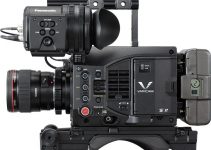Unless you’ve been living under a rock in the past few weeks, odds are you’ve already heard about the latest Instagram video sharing service – Instagram TV. One of the unique aspects of this social media platform is the fact that all content is published and viewed vertically – a significant deviation from the norm of creating a standard video using a common aspect ratio such as 16:9. It stands to reason that new production workflows and processes have to be followed to properly create content for the platform.
For those of you who might be interested, seasoned video editor Justin Odisho has put together a helpful video covering five editing tips on how to create and publish vertical video for Instagram TV.
When editing video for this innovative format, you have to ensure that your sequence dimensions match the technical requirements of Instagram TV, meaning that you’ll need to edit in a proper aspect ratio. If you want to do this inside of Premiere Pro CC, the process is rather simple.
To start off, head over to File > New > Sequence. Select the default preset you would normally use for any project and then access the Settings tab. Go ahead and change the frame size to 1080×1920, which should give you an aspect ratio of 9:16.
If you’re planning to create content for Instagram TV, it’s preferable that you shoot your raw footage vertically. However, if you need to edit a clip that must stay horizontal, there are several ways you can avoid having to deal with black bars in the background of your edit.
A classic editing trick used by content creators is to duplicate your horizontal footage and drag the duplicate clip above the original video. Then you’ll need to scale up the original clip so that it completely covers the background. The last step would be to add a gaussian blur and turn down the opacity. As a result, you’ll be presented with a subtle, yet visually appealing background that will make your horizontal footage fit with the edit.
Other background ideas when you have to use horizontal video include a simple color matte or graphics design which you can make inside of programs like Photoshop or illustrator.
Another idea of implementing horizontal footage in your Instagram TV video is by rotating the clip 90 degrees than scaling up the clip to fit the frame. Keep in mind that if you do this, the motion in your video may look odd to people viewing it vertically on the platform.
If you have a large enough piece of content – such as a stock video of a landscape – you can create fake camera movements to make your shots more engaging. You can do this by creating keyframes for properties such as position and scale, and animate the motion for the duration of a clip. An example of a possible fake camera move includes adjusting the position of a clip to move from left to right, thus creating a fake slider shot.
After all your hard work editing your video for Instagram TV, you’ll need to make sure that you export your media properly so that it’s viewable on the platform without any problems. While you can use many of the presets and codecs available in Premiere Pro CC, make sure that the dimensions of your output file match your sequence. This can be done by clicking the Match Source button, found in the Video tab of the Media Export window.
Meanwhile, here are some of the recommended specs for your Instagram TV vertical video.
- Preferred Format: MP4 (with H.264 Codec & AAC audio, 3,500 kbps video bitrate);
- Supported Video Aspect Ratios: Landscape (1.91:1), Square (1:1), Vertical (4:5);
- Supported video codecs: H.264 (preferred), VP8
- Supported audio codecs: AAC 128 kbps (preferred), Vorbis
- Frame Rate: 30fps or below.
- Maximum Dimensions: 1080px Wide.
- Playback Length: Maximum of 60 seconds
- Filesize Limit: 15MB
Instagram TV’s vertical viewing experience does pose some inconveniences for most editors who are accustomed to manipulating horizontal video. Nevertheless, by keeping these tips in mind, creating efficient workflows for creating consistent content to Instagram TV should come naturally after some time and practice.
[source: Justin Odisho]
Disclaimer: As an Amazon Associate partner and participant in B&H and Adorama Affiliate programmes, we earn a small comission from each purchase made through the affiliate links listed above at no additional cost to you.




